-
Use
Cable grids, shades -
Applications
Commercial, cultural, public, hospitality -
Characteristics
Shape defined by contour plan, choice of grid and panel materials
1 General Catalog

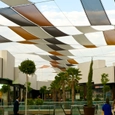
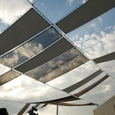
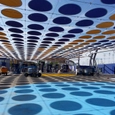
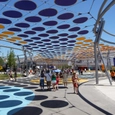
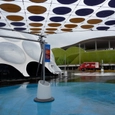
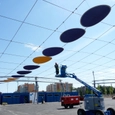
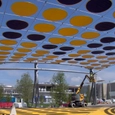
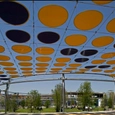
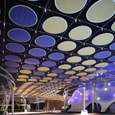
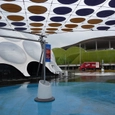
1 General Catalog
Lastra & Zorilla cable grids and shades are a covering system consisting of a series of overlapping cables oriented in different directions. The cables are attached to each other at each crossing point, generating a gapped grid to which membrane panels can be attached to.
Materials
Forms
The shape the canopy takes is defined by the geometry of the contour plan and the different heights of the contours. The result of the crossed-cable structure is a synclastic surface, stiffer with curvature. An important role is played by the grid supports; if they’re punctual with only a few masts, the whole structure’s reactions will be held by a few points, thus converging the cable geometry
Attachments
In order to attach the cables to one another and to the structure, multiple pieces are used. Normally, these consist of different kinds of plates that bolt two cables together. Foils are usually attached using small spring-like pieces of steel.
Calculating Costs
The choice of material is a main factor in the final cost; Stainless steel cables are more expensive and less resistant than galvanized but are considered to be more attractive.
Another deciding factor is the density of the cable structure for two reasons; the most expensive part of the cables are the terminals and not the steel wire and the more cables, the more gaps for the foil to fill in. A higher number of gaps requires more foils, which tends to makes the canopy more expensive since many small pieces cost more to make up a big surface area than one single piece. Large foils are structurally very demanding, requiring more cables/steel structure.